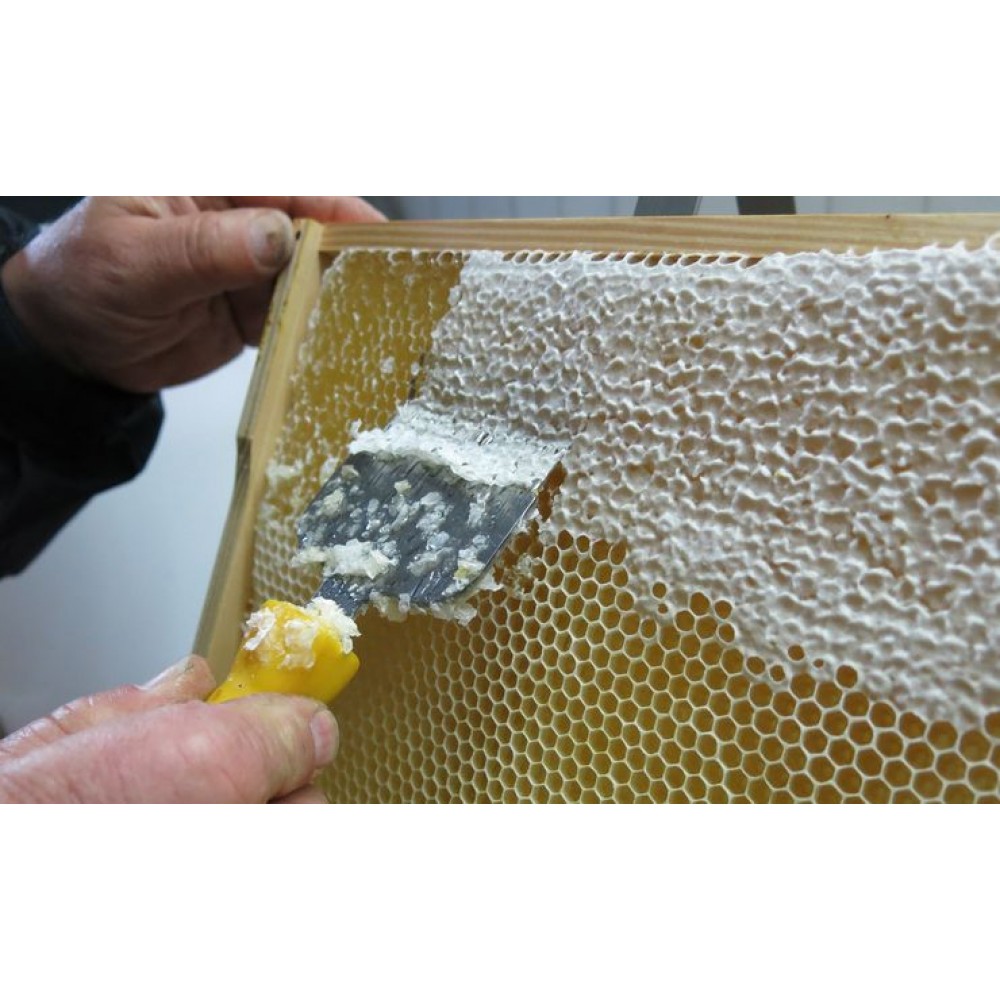Zabrus are wax seals (caps) with which bees cover the honeycomb with ripened honey. Other famous names are honey seal, trim, seal, wax seal. Zabrus is considered a kind of “quality mark”, since bees seal only ripe honey. At the same time, honey, located closest to the seals, contains the maximum amount of nutrients. There are substances in zabrus, which are significantly less or not at all in the pumped out honey.
This is LYSOCYME. In the bee colony, this enzyme provides antibacterial protection for the entire colony. In the human body, LYSOCYM is an activator of the immune system, providing an increase in local immunity, especially the mucous membranes of the nasopharynx, eyes, genitals, skin.
The zabrus contains 8 times more of this enzyme than ordinary honey. It is no coincidence that over burned honey is considered more healing.
When pumping out honey, wax caps (zabrus) are cut off together with the main amount of lysozyme.
The content of lysozyme in the bead is 20 times higher than in comb honey, and 140 times higher than in ordinary honey. We should also pay tribute to beewax, which is not found in ordinary honey at all.




